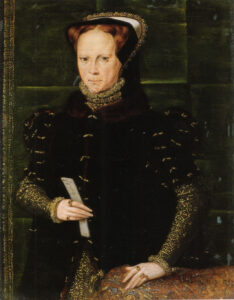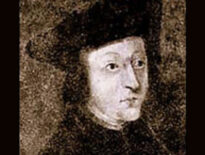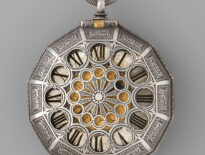 On this day in Tudor history, 20th January 1558, in the final year of Queen Mary I’s reign, there was the state opening of Mary’s fifth Parliament.
On this day in Tudor history, 20th January 1558, in the final year of Queen Mary I’s reign, there was the state opening of Mary’s fifth Parliament.
Now, by this point in her reign, Queen Mary I was a shadow of the woman who had once been hailed as the rightful queen of England, riding into London triumphantly in 1553 to take the throne back from Queen Jane, or Lady Jane Grey.
Mary’s reign had been difficult from the start, but by 1558, things were particularly bleak. England was embroiled in a war with France—a war that wasn’t even Mary’s to begin with. It was Philip of Spain’s war, and England had been dragged into it because of Mary’s marriage to him. Something that those opposed to the marriage had feared.
The war with France had been disastrous. In early January 1558, England lost Calais, its last foothold on the Continent. It was a humiliating and devastating blow as Calais had been held by England for over 200 years and was an important port for English wool exports. A bereft Mary reportedly said, “When I am dead and opened, you shall find ‘Philip’ and ‘Calais’ lying in my heart.”
This is the context in which Mary opened her fifth Parliament.
The business of this Parliament focused heavily on financial and military matters. England was struggling financially, and Mary desperately needed more funds to continue the war effort.
But there was also another reason this Parliament was significant—it was one of Mary’s final public appearances. After her husband, Philip, left England in July 1557, Mary had retreated from public life. She was isolated and in poor health, and she no longer enjoyed the court entertainments that had once been a part of her reign. She withdrew from masques, plays, and even her usual interactions with courtiers.
Why?
Because Mary believed she was pregnant again.
This pregnancy was to be her redemption. Her first phantom pregnancy in 1554 had been a source of embarrassment and sorrow for her. But in 1557, she truly believed she was expecting an heir to secure the Catholic succession. However, just like before, there was no baby.
By the time of this Parliament, Mary was living in a state of delusion and hope, believing that she was carrying the child that would save her legacy. But as we know, that child never came. In fact, her health was declining.
Mary wasn’t just dealing with the heartbreak of her failed pregnancies and her husband’s absence. She was also physically unwell. In August 1558, Mary contracted a fever, but she managed to recover. However, by the autumn, she was suffering from what doctors at the time called dropsy, which we now know as oedema, a condition that causes swelling due to fluid retention.
Mary’s health deteriorated rapidly in the weeks that followed, and by November 1558, she was gravely ill. In fact, she died on 17th November 1558, while her fifth Parliament was still in session, a queen’s government carrying on its business even as the queen lay dying.



Leave a Reply